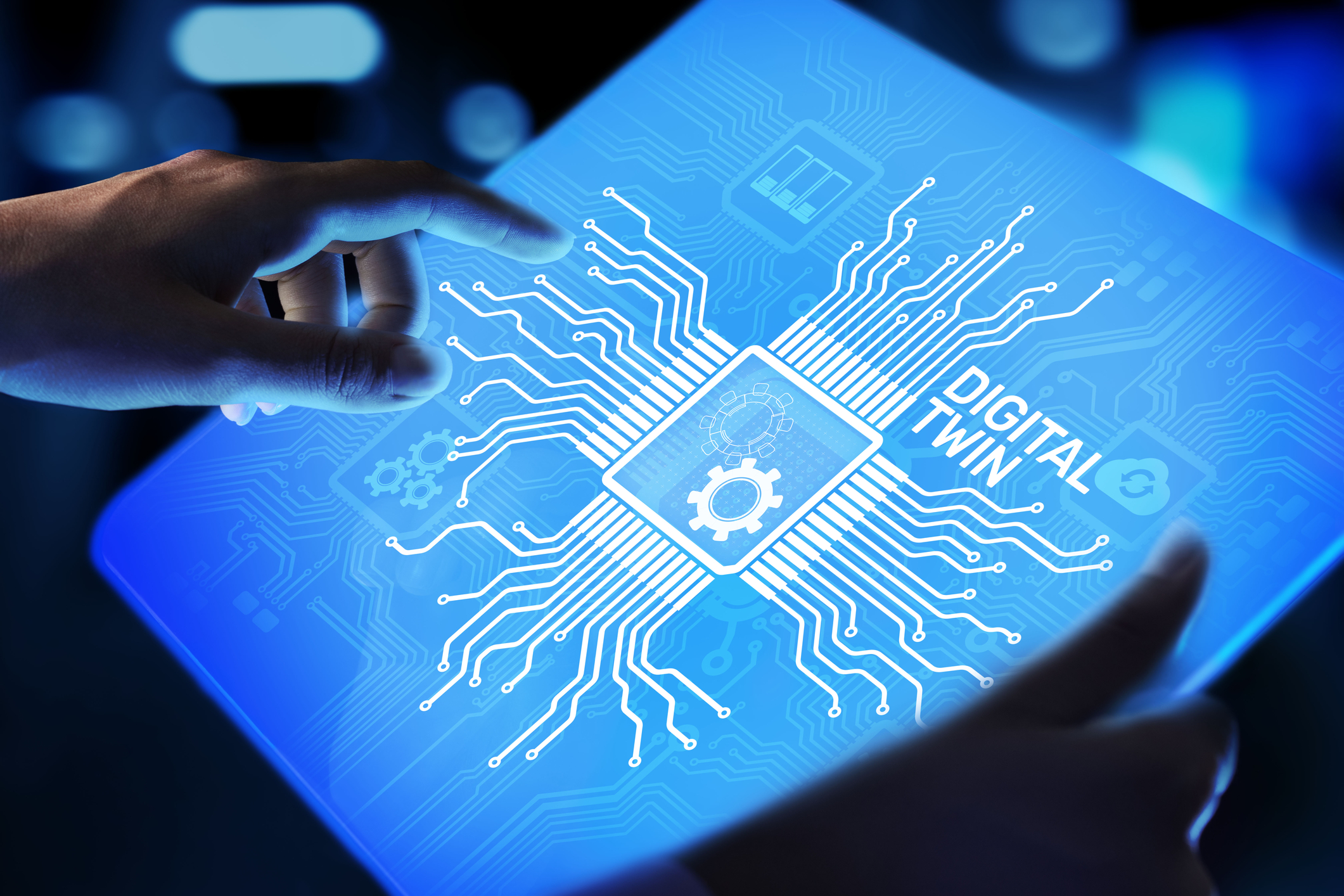A digital twin is a simulation that uses machine learning to provide insights into your business. Your simulation’s precision will depend on how you build it; the more sensors that you add, the more precise it will be. From that simulation, you can gain insights into your equipment, a specific process, or each process within your entire company. Think of a digital twin as a metaverse of your system and your processes that you can operate virtually and test how each component will respond to different stimuli.
In the past, manufacturing companies have primarily used digital twinning. Now more industries are considering this method of optimizing outputs and increasing efficiency in their work processes. We increasingly hear clients asking about how they can take advantage of digital twin technology in their own businesses.
The allure of building a digital twin—which allows the user to model what would happen to their equipment or work process in certain scenarios and play out all their “what if” ideas—is certainly strong. But you must ask if your business is ready to harness this technology. Or would you be pouring countless hours and dollars into developing a tool that will ultimately be overkill for what you actually need?
The answer, as with most things, is “it depends.”
When is building digital twin infrastructure not a great idea?
Most people reading this article should probably upgrade their IoT systems before undertaking a digital twin project. That’s because many people who want to build a digital twin are too early in the process to be successful.
You may understand that your business has reached a point where you need deeper insights into what’s going on with your processes or your equipment. Perhaps it’s difficult to determine why a certain malfunction happens at a particular point in your workflow, or to find ways to improve and optimize a certain process. You may even have a few sensors here and there gathering data already.
A digital twin seems like a great way to model everything out and run simulations to find your problem areas. However, building a digital twin when you’ve got very little IoT infrastructure already in place is a bit like buying a backhoe to weed your garden. It might technically work, but you really should think about starting smaller.
Your best option is to identify what it is that you’re trying to accomplish and then plan the simplest, quickest, and most cost-effective way to accomplish that goal. In most cases, and for most companies, IoT devices should be upgraded first.
In fact, you can often achieve early victories simply by adding some more sensors, compiling the data into a spreadsheet, and analyzing it yourself. For most companies just beginning with IoT, this will be much quicker and more cost-effective than diving right into digital twinning.
When should you start a digital twin project?
If most companies in most situations would be better served focusing on simpler solutions, how do you know when your company is ready to take the leap into a digital twin project?
You’ll probably be aware when your situation changes from wanting a digital twin to actually needing one.
Perhaps you have so much data that you need help visualizing and analyzing it. If you feel you have too much data to be useful for human interpretation (even with the help of spreadsheets and some simple data analysis software), and your IoT system is robust enough to measure and fully reproduce your equipment or process in a simulation, then you’re probably a good candidate for a digital twin.
A digital twin can give you that higher-level view you need to interpret your data and improve your process or equipment.
So if you already have some extensive IoT experience, plenty of sensors gathering data, and a true need for the power of digital twin technology, then go for it.
If you want to start working toward a digital twin, focus on IoT maturity.
Your IoT systems will serve as the basis for your digital twin infrastructure. If some of your machinery is equipped with IoT sensors and some is not, you’ll have trouble building a digital twin that accurately simulates reality. You could contact the manufacturers and order brand new equipment enabled with digital twin technology, but those upgrades will be very expensive.
So, you need to start at the beginning with small, simple things you can do right away. When in doubt, work your way through the IoT journey:
- Identify which things are important to measure.
- Install sensors to measure those things.
- Verify that the data you’re measuring is actually valuable.
- Repeat until you have a fairly robust digital model of what’s happening in reality.
The digital twin process doesn’t happen all at once; you’ll be making incremental changes for a long time before you reach a point where your simulation matches up with reality and can make accurate predictions based on hypothetical changes.
Here’s an example of how a typical digital twin project might evolve.
Much of the evolution of a digital twin project comes from trying to get the simulated model to accurately reflect what’s happening in real time.
You have to know your twin is a reliable proxy for the actual environment. If you change your equipment and process based on the model, and your digital twin simulation isn’t accurate, you have just spent all that time and money for nothing, and haven’t even identified and fixed your problems.
Let’s say, for example, that you run a metal stamping facility. You’re building a digital twin of your whole process. You’re measuring how metal comes into the facility, how it’s washed and prepped, and how it makes its way through a series of machines and to the inspection, packing, and sorting phases.
You may find that your digital twin, of the system out on the floor, is not reflecting what is actually happening. Something is going wrong in practice that is not going wrong in the digital twin simulation. You may find, for example, that when your machine crosses the threshold from stamping 1000 pieces an hour to stamping 1200 pieces an hour, things start to go poorly.
The simulation says everything should be fine at 1200, but the machine isn’t working correctly. You need to find out what’s happening.
The solution is to measure, in greater detail, what’s happening on the floor. It’s possible you’ve made some assumptions up to this point, and perhaps one of those assumptions is wrong. If the data your model is built from is inaccurate, it could be preventing your digital twin simulation from accurately reflecting what’s happening in practice.
To get the measurements you need, you will have to add additional sensing capabilities to your machinery. These sensors can help you gather extensive process data.
With new information, you will be able to pinpoint exactly where things are going awry and use that information to tune your digital twin. Make adjustments to the simulation until it reflects reality. Then you’ll be able to understand and see what’s actually happening at that point in the process.
Let’s say that your new temperature sensor is picking up a higher heat level than you anticipated when the machine begins to process more than 1000 pieces an hour. This overheating is affecting future batches, which is why you’ve started to notice poorer outcomes.
Now that you understand what’s going on, you can focus your resources on investigating the source of the excess heat and changing your process or modifying your equipment to fix the problem.
Software Design Solutions can help you move down the path toward IoT maturity.
You may be searching for digital twin solutions because you’ve reached a point in your business where you know you need more detailed, in-depth, and powerful information in order to make improvements. Perhaps you’ve realized that if you had a certain measurement or a small piece of missing information, you would be able to add that information to your digital twin model and see where you have opportunities to improve system performance. Once you have a digital twin simulation that runs a perfect simulation, you can invest in upgrading your equipment or change your process and employ your ideal solution in the field.
But without that crucial piece of information, you’re stuck.
SDS can help you plan and implement the IoT devices and sensors you need to be able to gather the critical data to help you reach your goals. In short, we help you fill in the missing pieces of the data puzzle and speed up the IoT maturity process so you can build a digital twin that will take your business to new heights.

